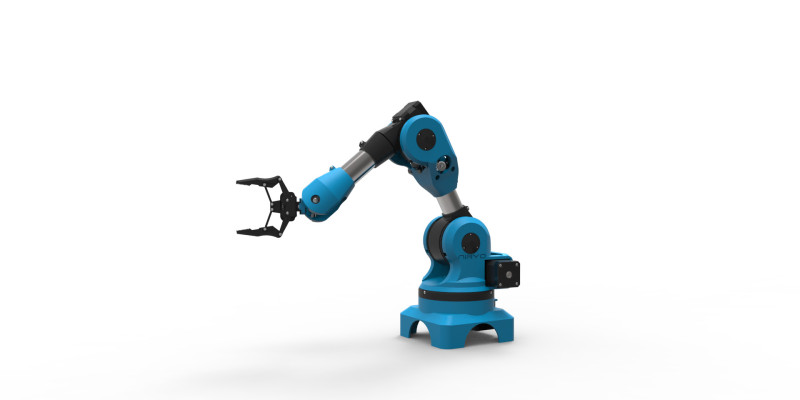Over the recent years, access to robotics and maker projects is now easier than ever. The tools needed, like 3D printers, have massively reduced in cost, and the amount of help online is amazing. It's no wonder that there's a plethora of new ideas and projects being released all the time. Niryo One aims to make a useful robot that's accessible to anyone. Not only is it educational, but it can be used for tasks around the home.
Niryo One is a 6-axis robotic arm, allowing multiple degrees of accurate movement. The main market for this is makers and educators, but it also promises to be useful enough for small companies to take advantage of it. The robot has been designed to be printed with a 3D printer, and uses Arduino and Raspberry Pi as the controller, along with the Robot Operating System.
There's been a few crowd-funded robotic arms in the past, but what sets Niryo One apart is it's 6-axis of control. Not only can it pick up and move objects from the table in front of it, but it can tilt and swivel any-which-way, to draw on a whiteboard, or even above it. As anyone who has worked with industrial robotic arms will know, the standard is 6-axis of control, as it can move around with a large degree of control and flexibility.
Controlling Niryo One can be achieved in a few different ways. The first is learning mode - physically move the arm around, and it will record the movements, and play them back in a loop. This is a quick and easy way to record a pattern, and the team have supplied a GIF showing the robot stirring a pot of soup! The second way is via a joystick, such as an XBox or Playstation controller. The third is by use of G-Code machine instructions. This mode is still in development, but offers accurate movement such as those performed by a CNC machine. Control is offered by a web and mobile interface, meaning you can simply plug in, and control the arm wirelessly over Wi-Fi.
All the code to run the arm will be open-sourced, along with the STL files to print your own, allowing the average maker to print and assemble their own. As the design is all open-source, there is the possibility to repair, replace and even upgrade parts as you see fit. Using a Python API, you can create and run your own scripts directly, which is perfect for those wanting to automate a complicated task.
Building your own also teaches a lot of skills that can be applied to other projects. It uses the same stepper motor and RAMPS shield that most DIY 3D printers run off, teaches best-practice methods for communicating between a Raspberry Pi and an Arduino, and how to read external sensor data using safe asynchronous methods.
There are 7 tools that can be changed for the end of the arm - 3 different sized grippers, an electromagnet, a vacuum pump, a pen holder, and a DC motor for drilling and sanding etc. These are all optional extras, but being an open platform, there's no reason you can't create your own ends for your needs.
The Niryo One looks amazing, and has a multitude of different uses from cooking food and stamping envelopes, to being a full maker's companion. The Niryo One is on Kickstarter now, and for €119, you can get your very own robotic arm shipped to you in September.
